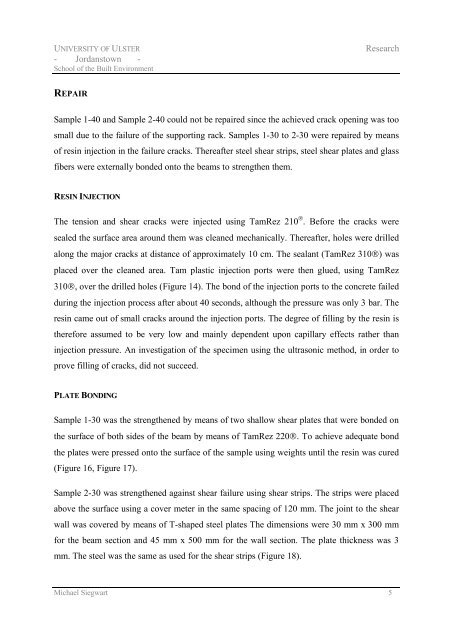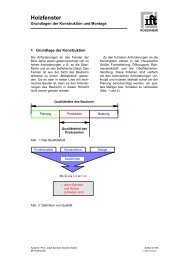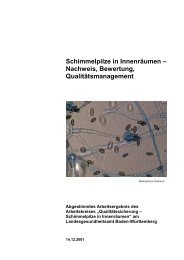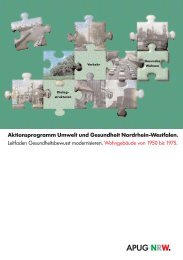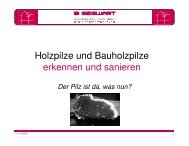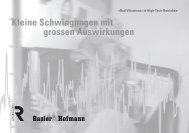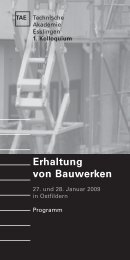Carbon fibre reinforced laminates Bonded steel ... - Siegwart, Michael
Carbon fibre reinforced laminates Bonded steel ... - Siegwart, Michael
Carbon fibre reinforced laminates Bonded steel ... - Siegwart, Michael
You also want an ePaper? Increase the reach of your titles
YUMPU automatically turns print PDFs into web optimized ePapers that Google loves.
UNIVERSITY OF ULSTER<br />
- Jordanstown -<br />
School of the Built Environment<br />
Research<br />
REPAIR<br />
Sample 1-40 and Sample 2-40 could not be repaired since the achieved crack opening was too<br />
small due to the failure of the supporting rack. Samples 1-30 to 2-30 were repaired by means<br />
of resin injection in the failure cracks. Thereafter <strong>steel</strong> shear strips, <strong>steel</strong> shear plates and glass<br />
fibers were externally bonded onto the beams to strengthen them.<br />
RESIN INJECTION<br />
The tension and shear cracks were injected using TamRez 210 . Before the cracks were<br />
sealed the surface area around them was cleaned mechanically. Thereafter, holes were drilled<br />
along the major cracks at distance of approximately 10 cm. The sealant (TamRez 310) was<br />
placed over the cleaned area. Tam plastic injection ports were then glued, using TamRez<br />
310, over the drilled holes (Figure 14). The bond of the injection ports to the concrete failed<br />
during the injection process after about 40 seconds, although the pressure was only 3 bar. The<br />
resin came out of small cracks around the injection ports. The degree of filling by the resin is<br />
therefore assumed to be very low and mainly dependent upon capillary effects rather than<br />
injection pressure. An investigation of the specimen using the ultrasonic method, in order to<br />
prove filling of cracks, did not succeed.<br />
PLATE BONDING<br />
Sample 1-30 was the strengthened by means of two shallow shear plates that were bonded on<br />
the surface of both sides of the beam by means of TamRez 220. To achieve adequate bond<br />
the plates were pressed onto the surface of the sample using weights until the resin was cured<br />
(Figure 16, Figure 17).<br />
Sample 2-30 was strengthened against shear failure using shear strips. The strips were placed<br />
above the surface using a cover meter in the same spacing of 120 mm. The joint to the shear<br />
wall was covered by means of T-shaped <strong>steel</strong> plates The dimensions were 30 mm x 300 mm<br />
for the beam section and 45 mm x 500 mm for the wall section. The plate thickness was 3<br />
mm. The <strong>steel</strong> was the same as used for the shear strips (Figure 18).<br />
<strong>Michael</strong> <strong>Siegwart</strong> 5


